encoders | Industrial Ethernet and Industry 4.0 encoders
- Details
- Hits: 27718
Encoder act as a sensor for precise speed measurement and position detection in manufacturing processes, mobile work machines and industrial drive technology. Here the protractors convert rotational movement into digital signals. This is where they work encoder with wear-free scanning that is optoelectronic or magnetic. There are incremental encoders and absolute encoders. In the following we will introduce you to the new developments:
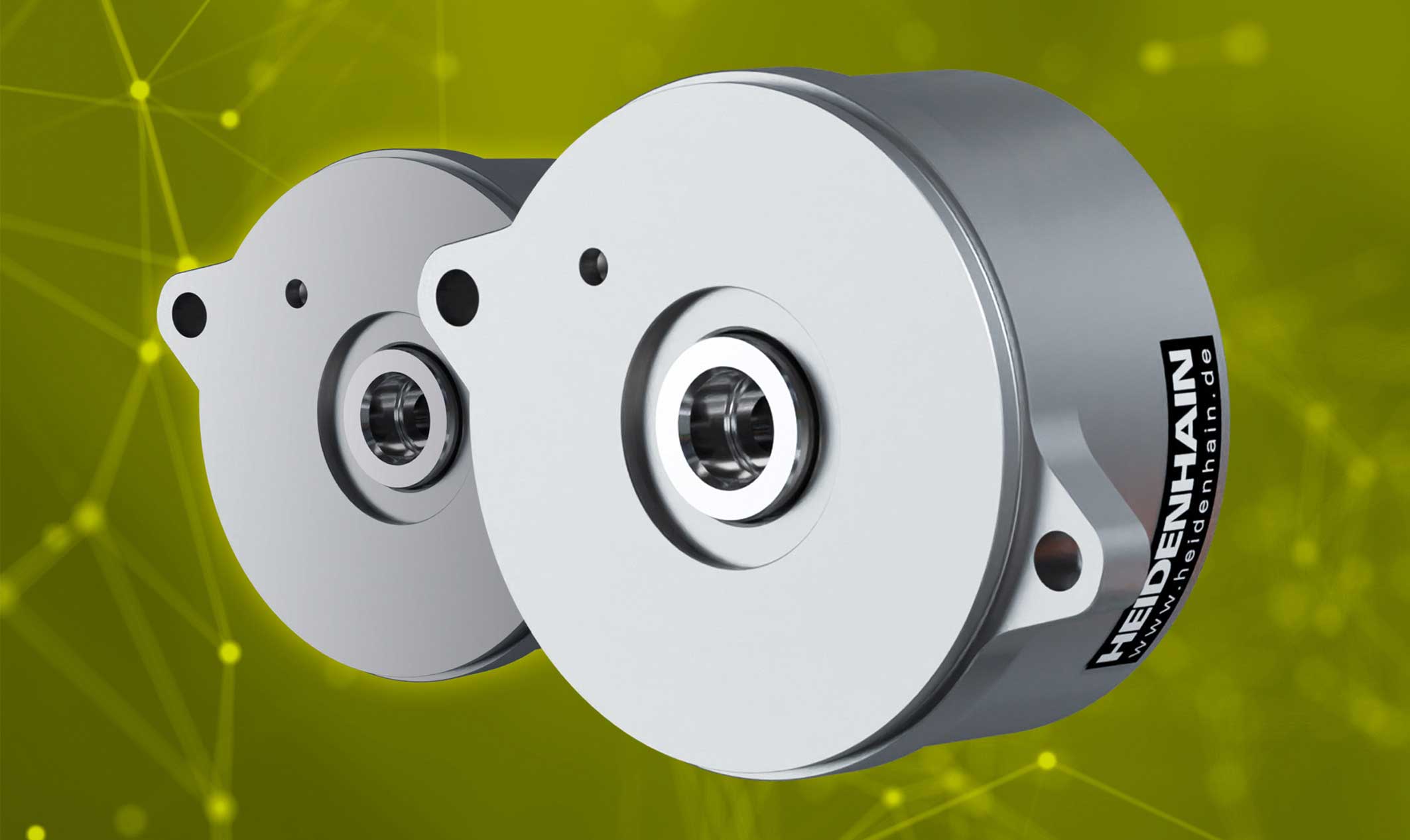
Contents
- Encoder 2023 – The most important things in brief
- High-resolution Profinet absolute encoders
- Compact encoders for thermally highly stressed drives
- Encoders with IO-Link for predictive maintenance
- Rotary encoders for battery production
- Compact 36 mm absolute rotary encoder with analogue interface
- Energy harvesting multiturn kit rotary encoder
- Industrial Ethernet encoder platform
- Single and multiturn encoder with solid shaft and hollow shaft
- Rotary encoder for rough offshore use
- Fully integrated incremental encoder for direct drives
- CANopen encoders for medical technology and mobile automation
- Archive for encoder innovations
- FAQ
Encoder 2023 – The most important things in brief
With the newest ones developments and trends In the encoder area, the focus is on precision, performance, efficiency and network capability. There is a clear development towards more digitalization and integration into modern technologies for real-time applications.
The reduction in installation space is taken into account with bearingless encoders. The encoders provide data for the via interfaces predictive maintenance. There is a clear trend towards Industrial Ethernet interfaces such as Profinet, Ethernet/IP, Ethercat, Powerlink or Modbus, which is driven by the requirements of Industry 4.0 and the associated larger data volume. IO-Link is also increasingly being integrated.
Around functional safety The angle encoders meet safety requirements by being equipped with various redundant systems and integrated safety functions. In addition, open systems are increasingly putting proprietary systems under pressure. Single-cable solutions are becoming established, for which the rotary encoders are also being made fit.
High-resolution Profinet absolute encoders
 19.09.2023/XNUMX/XNUMX | The new Encoder with Profinet-Interface (picture above) for real-time applications Turck are mainly used in logistics, food technology and mechanical engineering. The RES (Singleturn) and REM (Multiturn) encoder series rely on the current Profinet encoder profile version 4.2.
19.09.2023/XNUMX/XNUMX | The new Encoder with Profinet-Interface (picture above) for real-time applications Turck are mainly used in logistics, food technology and mechanical engineering. The RES (Singleturn) and REM (Multiturn) encoder series rely on the current Profinet encoder profile version 4.2.
Compact encoders for thermally highly stressed drives
28.11.2022/1122/1134 | With the absolute encoder series ECI XNUMX and EQI XNUMX Heidenhain the next generation of inductive sensing. They offer low speed ripple, low noise and, thanks to the Endat 3 interface, require less cabling and record operational status data. This is made possible by the increased resolution of the single-turn position to 22. It also leads to a significant improvement in control performance in the Motor.
The measured values can be transferred to a PC via the Endat 3 interface the one-cable solution HMC 2 can be connected. The new rotary encoders thus expand the many advantages that inductive encoders offer for drives in demanding automation, such as insensitivity to magnetic fields, resistance to dirt, compact dimensions, high working temperatures and large assembly tolerances.
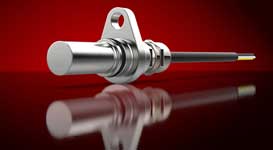 Speed sensor | Monitors and controls drives
Speed sensor | Monitors and controls drives
In addition to the rotary encoders type KCI 1319 or KBI 1335, the compact and lightweight drive encoders also have the new versions KCI 1318 FOT or KBI 1335 FOT. They have a purely serial Endat 2.2 interface. With the Fan out technology (FOT), the encoder specialist attaches the electronic components and conductor tracks directly to a metal carrier, which can act as a bearing shield cover, for example. This reduces the number of components and the space required. Heat can be dissipated directly to the outside via the metal carrier. The pitch circle with hub is pressed onto the shaft.
Encoders with IO-Link for predictive maintenance
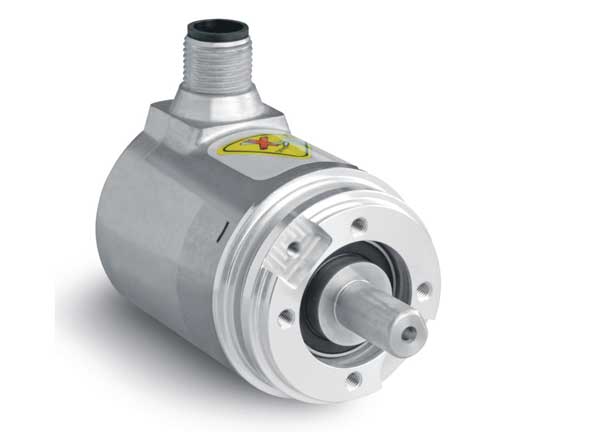 28.10.2022/4.0/XNUMX | Encoders provide important information for condition monitoring and thus make a significant contribution to predictive maintenance concepts in the Industry XNUMX factory. Siko presents the new absolute encoders WV3650M and WH3650M with IO-Link interface.
28.10.2022/4.0/XNUMX | Encoders provide important information for condition monitoring and thus make a significant contribution to predictive maintenance concepts in the Industry XNUMX factory. Siko presents the new absolute encoders WV3650M and WH3650M with IO-Link interface.
The encoders from the 2nd generation of the 36 mm series are particularly compact, robust and come in a new architecture. It is optionally available as a solid shaft or hollow shaft version with a SSI or an IO-Link Interface. The latter is integrated according to the latest standard in version 1.1 according to IEC 61131-9. When it comes to communication and diagnostics, the sensors transmit the information relevant to system availability, such as temperature, operating hours and other diagnostic data, together with the values for position and speed.
The encoders are quickly integrated into the controller and can be quickly and easily integrated into the system based on a large number of electrical and mechanical options. Single-turn, multi-turn, connector or Cable outlet, with solid shaft or hollow shaft, the rotary encoders can be configured to the needs of the application.
The multiturn versions are gearless and batteryless and record over 16 million revolutions and a range of 24 bits. With a protection class of up to IP67, a temperature range of -40° to +85 °C and high shock and vibration resistance, the encoders are suitable for use in industrial applications and in factory automation. Combined with cable encoders, the component records linear distances of up to 15 m absolutely and precisely.
Rotary encoders for battery production
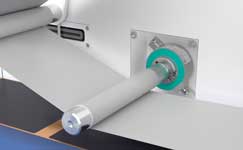 07.06.2022 | Coated foils are the most important starting material Lithium Ion Battery. Delivered on large rolls, they are unwound from them in battery production. The pull-off speed of the rollers is measured by high-precision rotary encoders Pepperl + Fuchs.
07.06.2022 | Coated foils are the most important starting material Lithium Ion Battery. Delivered on large rolls, they are unwound from them in battery production. The pull-off speed of the rollers is measured by high-precision rotary encoders Pepperl + Fuchs.
Compact 36 mm absolute rotary encoder with analogue interface
 15.02.2022/XNUMX/XNUMX | In the factory Automation, process technology or Medical Technology machines are becoming more and more complex. This also has an effect on the sensors used. The new absolute rotary encoders AV3650M and AH3650M from Siko meet these requirements. They measure positions precisely and reliably in a very compact and robust housing. However, the encoders are also robust against interference and environmental influences. The absolute position values are determined via the integrated analogue interfaces. The large number of variants includes 0...10 V, 0...5 V and 4...20 mA.
15.02.2022/XNUMX/XNUMX | In the factory Automation, process technology or Medical Technology machines are becoming more and more complex. This also has an effect on the sensors used. The new absolute rotary encoders AV3650M and AH3650M from Siko meet these requirements. They measure positions precisely and reliably in a very compact and robust housing. However, the encoders are also robust against interference and environmental influences. The absolute position values are determined via the integrated analogue interfaces. The large number of variants includes 0...10 V, 0...5 V and 4...20 mA.
The two sensors with the magnetic measuring principle have a Energy harvesting technology based multiturn system. This makes it possible to measure the revolutions without a mechanical gear or battery. The sensors are also particularly wear and maintenance-free. With their small design with an outer diameter of 36 millimeters, the rotary encoders record more than 65.000 revolutions absolutely and precisely. Using the integrated teach-in function, users can easily adapt the analog current or voltage interface to the required measuring range.
The IP67 sensors are so robust and resilient that they withstand dirt, vibration and moisture at temperatures from -40° to +85 °C. The encoders therefore deliver reliable position values even in demanding industrial applications. The variants AV3650M and AH3650M are very flexible when mounting on the machine body. The AH3650M is available with various hollow shaft diameters from 6 to 10 millimeters. Various solid shaft versions are available for the AV3650M. Both sensors are available with the usual types of mounting. This allows them to be easily integrated into the overall system.
Energy harvesting multiturn kit rotary encoder
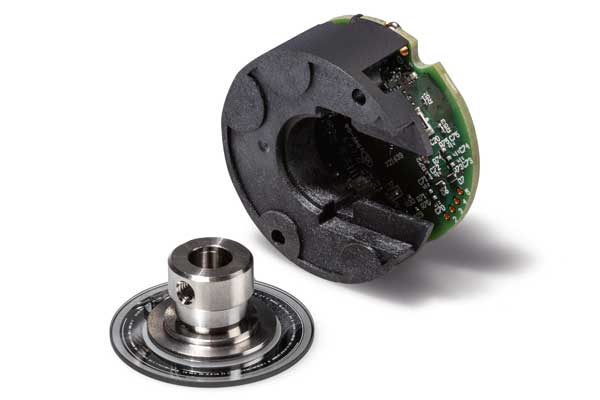 11.01.2022/35/XNUMX | The NYSXNUMXK Energy Harvesting Multiturn Kit Encoder Megatron works extremely precisely even in a voltage-free state. Based on energy harvesting, it offers excellent precision and true power-on multiturn properties. These were previously only reserved for high-end applications. As a multi-turn kit absolute encoder or single-turn rotary encoder, the NYS35K detects angles greater than 360° with the highest level of accuracy (16-bit multi-turn/20-bit single-turn) even in a voltage-free state.
11.01.2022/35/XNUMX | The NYSXNUMXK Energy Harvesting Multiturn Kit Encoder Megatron works extremely precisely even in a voltage-free state. Based on energy harvesting, it offers excellent precision and true power-on multiturn properties. These were previously only reserved for high-end applications. As a multi-turn kit absolute encoder or single-turn rotary encoder, the NYS35K detects angles greater than 360° with the highest level of accuracy (16-bit multi-turn/20-bit single-turn) even in a voltage-free state.
The product design of NYS35K is reduced to the essentials and includes high-quality sensor elements Electronics and electronics carrier. The developers have dispensed with a housing and a shaft bearing in favor of a compact design. With a diameter of 35 mm and a depth of just 20,4 mm, the sensor fits into even the smallest of spaces. The encoder is suitable for use in robotics, actuators for skylights, gates, agitators or bottling plants and motor feedback.
In the single-turn version, the resolution is 20 bits, in the true power-on multi-turn kit encoder version it is 16 bits. The multiturn version measures based on these parameters absolute values with a precision of 1.048.576 steps per revolution of the shaft and angles up to 65.536 revolutions. This allows an absolute angle measurement of more than 23 million degrees.
Special data acquisition and signal processing
The measured value acquisition, signal formation and processing are particularly interesting: The encoder basically measures angular changes using a optical encoder wheel. In the multiturn variant, a magnet was installed in the center of the coding wheel. This excites an energy wire on the overlying PCB (Printed Circuit Board). Even in the case of a de-energized condition, the wire provides sufficient energy upon actuation of the shaft to store information about the number of turns in an eerom. Even in such situations, this information is available at the signal output after the supply voltage is restored. The true power-on function works without batteries or gears, based on Wiegand's patented energy harvesting technology.
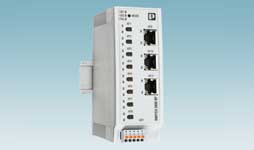 Ethernet switches | The data driver in the network
Ethernet switches | The data driver in the network
For use in scaled, fully automated production systems, the sensor is optionally available with a calibration unit. This eliminates any assembly tolerances electronically through calibration (phase calibration kit). Since the NYS35K does not have a housing, depending on the application it may be necessary to place a cylindrical hollow body over the encoder, which serves as magnetic shielding or IP protection.
Industrial Ethernet encoder platform
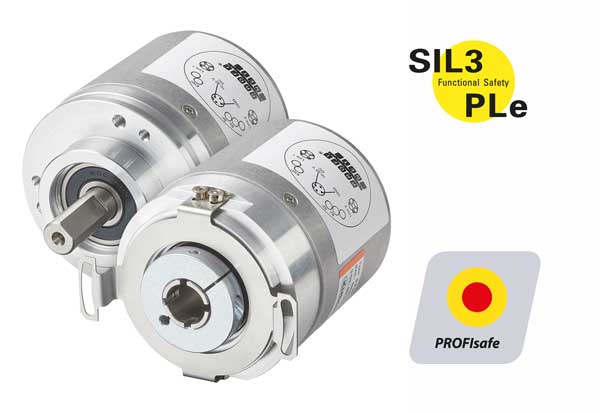 29.09.2021 | Kübler presented with the Sendix Profisafe encoder launched its first secure Industrial Ethernet encoder after the company had already had one two years ago Profinet rotary encoder has presented. The new Sendix S58 professional safe is SIL3 / PLe certified.
29.09.2021 | Kübler presented with the Sendix Profisafe encoder launched its first secure Industrial Ethernet encoder after the company had already had one two years ago Profinet rotary encoder has presented. The new Sendix S58 professional safe is SIL3 / PLe certified.
The Industrial Ethernet encoders are based on the new Industrial Ethernet encoder platform, which Kübler will gradually expand with additional protocols and the associated features. This results in optical single-turn and multi-turn encoders in a compact design with a size of 58 mm. The multiturn encoder designs are available with multiturn gears or optically with the patented Intelligent scan technology gearless. Due to their new design without the classic fieldbus cover, the new encoders are also suitable for the tightest installation spaces.
When developing the new platform, Kübler attached particular importance to ensuring that it is future-proof. This also includes the implementation of special customer requests. firmware and telegrams, special default configurations, approvals (Ex 2/22), surface protection for extreme requirements, optional features such as shared device, shared inputs, I&M records 1-4, CiR, FSU and much more can also be implemented on the hardware side.
Additional functions can be found via Updates to be added. This can be done easily via the integrated web server in the encoder. Current protocol stacks bring significantly more features with them. The plug-and-play industrial Ethernet encoders are also compatible with the manufacturer's existing Ethernet encoders. The Ethernet encoders will have their own administration shell so that the user can access the data recorded via the cloud to implement condition monitoring and predictive maintenance.
Platform for all Ethernet interfaces
With the development of the Industrial Ethernet platform, Kübler offers successively all common Industrial Ethernet protocols at. Starting with classic Industrial Ethernet protocols such as Profinet, Profidrive or Profienergy, Ethercat and Ethernet / IP are added. The integrated web server and cyber security are also part of the new platform. Ethernet protocols for functional safety such as Profisafe, FSoE or CIP-Safety are in planning.
 Position sensors for special effects in the big blockbuster cinema
Position sensors for special effects in the big blockbuster cinema
Will be in the future OPC UA and MQTT offer the advantages of the Industrial Ethernet platform in terms of a convergent network. As a long-term goal, Kübler would like to serve all common Industrial Ethernet interfaces on the common platform, in which the encoders of mechanics, housing and electronics do not differ.
Features of the Profisafe encoder
As a safe single-turn encoder, the Sendix S58 Profisafe rotary encoder transmits up to 16 bit safe or up to 24 bit non-safe and fully redundant multiturn information of 12 bit safe. Like the Profinet encoder in the 58 mm housing, the Sendix S58 Profisafe is equipped with the latest profiles (Profinet v2.35 / Profisafe profile v2.6, Profidrive profile v4.2, encoder profile v4.2). It corresponds to the encoder Class 4 / S2. The encoder provides the recorded measurement and diagnostic data via safety telegrams 36/37. Thanks to the robust internal storage in the safety lock design and Degree of protection IP67 the new Profisafe encoders are suitable for almost every application.
Especially for safety-relevant applications in which the Sendix S58 Profisafe encoder will be used in the future Communication with the cloud are used, they are equipped with the Cyber Security feature in accordance with IEC 62443. This provides the system with maximum protection from a total failure caused by the threat of hacker attacks.
Single and multiturn encoders with solid and hollow shaft
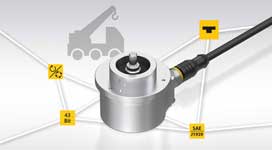 23.09.2021 | Turck has added new encoders to its extensive encoder portfolio Encoder with SAE J1939 Interface enhanced. The rotary encoders in the Industrial and Efficiency Line, which are primarily used in the field of mobile working machines, are available as single-turn or multi-turn versions in a full version or hollow-shaft version.
23.09.2021 | Turck has added new encoders to its extensive encoder portfolio Encoder with SAE J1939 Interface enhanced. The rotary encoders in the Industrial and Efficiency Line, which are primarily used in the field of mobile working machines, are available as single-turn or multi-turn versions in a full version or hollow-shaft version.
Rotary encoder for rough offshore use
 18.06.2021/XNUMX/XNUMX | Fall deck machines on rough seas off, that doesn't bode well for the planned maneuver. For this reason, the maintenance personnel often replace components such as the rotary encoders on the axes each time the machine is serviced. This is no longer necessary with the new POG 83 incremental encoder from Baumer.
18.06.2021/XNUMX/XNUMX | Fall deck machines on rough seas off, that doesn't bode well for the planned maneuver. For this reason, the maintenance personnel often replace components such as the rotary encoders on the axes each time the machine is serviced. This is no longer necessary with the new POG 83 incremental encoder from Baumer.
Fully integrated incremental encoder for direct drives

26.04.2021/XNUMX/XNUMX | The demands on linear drives in terms of dynamics, synchronization and cost efficiency are constantly increasing and require new solutions. Sensitec has a new incremental encoder concept for this linear actuator and tubular motor. It offers several advantages compared to conventional external position measuring systems.
The special thing about the incremental encoder sensor module EMI7913 is that Multi-fixpitch concept. Instead of one sensor element, Sensitec places an array of several AMRs Sensors on a circuit board. The sensors are fitted at a distance derived from simulation beforehand. A length sensor in fix-pitch design that has been specially optimized for the application is used. The encoder's MR strips are geometrically matched to a specific pole length of the magnetic scale.
Incremental encoder integrated in the drive
The rotary encoder is moving Primary part of the Motors integrated. The position is close to the three-phase windings. The motor magnets are the magnetic yardstick. This means that no additional scale component is required. The omission of an additional scale and the integration of the encoder into the drive system save effort and costs.
The system offers a high installation tolerance, which saves time during final assembly. The arrangement of the sensors ensures a good and stable signal quality. The encoders can be easily adapted to the respective magnets by the customer. The AMR sensors used in the multi-fixpitch configuration described are inexpensive. The new incremental encoder should therefore be of particular interest for use in handling systems with medium accuracy requirements.
CANopen encoders for medical technology and mobile automation
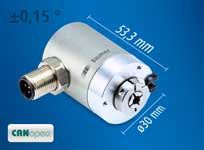 16.04.2021/XNUMX/XNUMX | A rotary encoder can be Use in moving parts or often difficult to integrate in the tight installation space. In attachments from mobile machines or in medical technology, the precise measurement of the position in the smallest possible construction is required. for this Baumer expanded its encoder program.
16.04.2021/XNUMX/XNUMX | A rotary encoder can be Use in moving parts or often difficult to integrate in the tight installation space. In attachments from mobile machines or in medical technology, the precise measurement of the position in the smallest possible construction is required. for this Baumer expanded its encoder program.
FAQ
What does the encoder do?
An encoder, too encoder, is a device that converts mechanical movements into electronic signals. It is often used in motion control systems, where it precisely records and monitors the position, speed or direction of a rotational movement. This information is needed for precise control and regulation of mechanical systems in many applications, including robotics, factory automation or vehicle control.
Which encoders are there?
There are mainly two types of encoders: incremental encoders and absolute encoders.
- Incremental generate a series of pulses that represent movement relative to a starting position. They are needed to measure movement, speed and direction. However, incremental encoders require a reference run after every power failure because they do not store an absolute position.
- Absolute Encoder provide a unique code for each position, so that the exact position is known immediately even after a power failure or when switching on. They are available in single-turn and multi-turn variants, with single-turn encoders recording the position within a single revolution and multi-turn encoders recording the number of all revolutions made.
How does an incremental encoder work?
An incremental encoder or Incremental or incremental encoder works by converting mechanical movements into a series of electrical pulses. These pulses correspond to increments of movement. The encoder consists of a disc with markings that can be read either optically or magnetically. Every time the disc moves, sensors generate impulses that convert the movement into digital signals. These signals are then evaluated by a control system to obtain information about the position, speed and direction of the movement. Since incremental encoders only measure relative movements, a reference run is necessary after every switch-on or power failure in order to determine the absolute position.
How does an absolute encoder work?
An absolute encoder, also known as Absolute encoder or absolute encoder, determines and provides unique position information for each angular position. In contrast to the incremental encoder, which only measures relative changes, the absolute encoder stores a specific code for each position. This means that it knows the exact position immediately without reference travel, even after a power failure or restart. In practice, an absolute encoder works through a coded disk that has a unique digital code for each angular position. Sensors in the device read this code and transmit the information about the position as a digital signal. This coding can be optical or magnetic and enables precise and immediate position determination regardless of previous movements or power interruptions.

Angela Struck is editor-in-chief of the development scout and freelance journalist as well as managing director of Presse Service Büro GbR in Ried.
